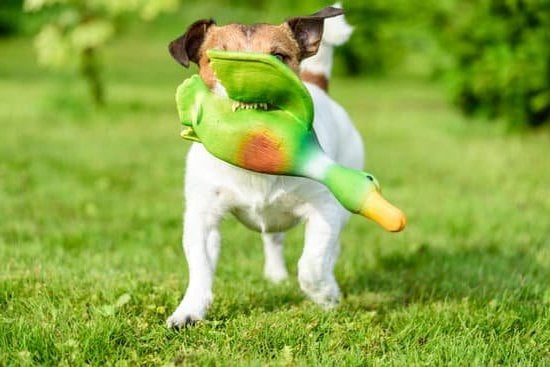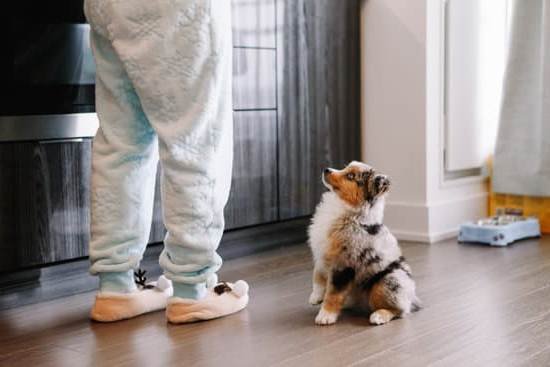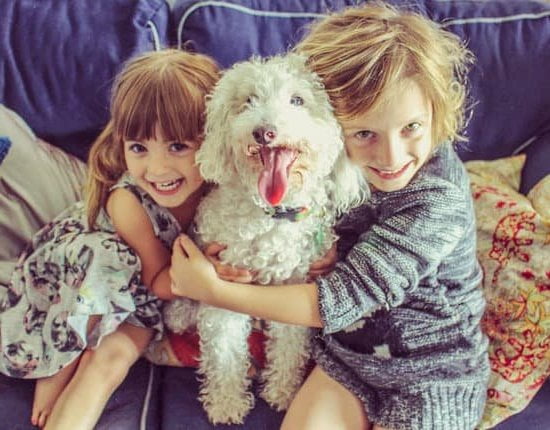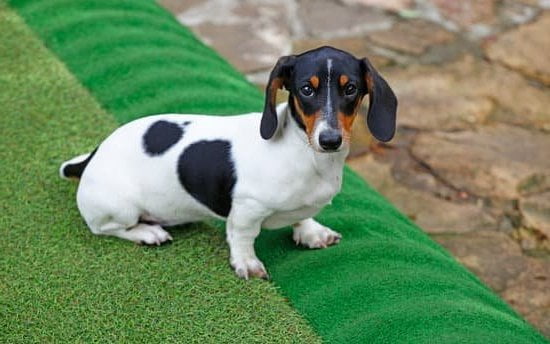Are you wondering how to train a dog to pee outside? Outdoor potty training for dogs is an essential aspect of their behavior and overall well-being. Understanding the importance of outdoor potty training is crucial in ensuring a happy and healthy relationship with your furry friend.
Choosing the right method for outdoor potty training can greatly impact its success. Different breeds and sizes of dogs may require different approaches, so it’s important to tailor your training method to suit your specific dog’s needs.
Setting a consistent potty schedule for your dog is key in establishing good habits. Dogs thrive on routine, and by providing them with a consistent schedule, you can help them learn when and where they should be peeing outside.
Creating the perfect outdoor potty spot for your dog is also essential. This designated area should be comfortable and accessible for your dog, making it more likely that they will choose to use that spot for their outdoor bathroom needs.
Choosing the Right Outdoor Potty Training Method for Your Dog’s Breed and Size
When it comes to outdoor potty training for dogs, one size does not fit all. Different dog breeds and sizes may require different training methods to successfully train them to pee outside.
Small breeds, for example, may need more frequent trips outside due to their smaller bladders, while larger breeds may be able to hold it for longer periods of time. Understanding the specific needs of your dog’s breed and size is crucial in choosing the right outdoor potty training method.
For small breeds, consider using a litter box filled with natural materials like grass or mulch that mimic the outdoor environment. This provides a familiar and comfortable substrate for small dogs to use when they can’t go outside.
For larger breeds, crate training combined with regular outdoor trips can help set a consistent routine for bathroom breaks. By understanding your dog’s specific needs and researching suitable potty training methods for their breed and size, you can set them up for success in learning how to train a dog to pee outside.
It’s important to note that some dogs may have unique challenges that require specialized potty training methods. For example, older dogs or rescue dogs may have never been trained to pee outside or may have developed bad habits indoors.
In these cases, patience and persistence are key in finding the right outdoor potty training method that works for your dog. Additionally, seeking guidance from professional trainers or behaviorists can provide valuable insights on tailoring the training approach to your dog’s individual needs.
Setting a Consistent Potty Schedule for Your Dog
Understanding Your Dog’s Needs
Before setting a potty schedule for your dog, it’s important to understand their unique needs. Different breeds and sizes of dogs have varying bladder capacities and metabolic rates, which can affect how frequently they need to go outside. Puppies, for example, may need more frequent potty breaks compared to adult dogs. Take into account your dog’s age, breed, size, and overall health when planning their potty schedule.
Establishing a Routine
Once you have an understanding of your dog’s needs, it’s time to establish a routine. Take note of the times when your dog typically needs to go pee – such as first thing in the morning, after meals, before bedtime, and after playtime or exercise.
Create a consistent schedule for these potty breaks and stick to it as much as possible. By doing so, you are teaching your dog that there is a designated time and place for them to relieve themselves.
Consistency and patience are crucial when setting a potty schedule for your dog. It may take some time for them to adjust to the new routine, especially if they were previously accustomed to indoor pottying. With positive reinforcement and dedication on your part as the owner, you can effectively train your dog to pee outside at specific times throughout the day.
By setting a consistent potty schedule for your dog and understanding their individual needs, you can make significant progress in outdoor potty training. Remember that every dog is different, so be patient and adaptable in tailoring the schedule to fit your pet’s requirements.
Creating the Perfect Outdoor Potty Spot for Your Dog
Choosing the Right Location
When creating an outdoor potty spot for your dog, it’s important to choose the right location. Look for an area that is easily accessible to your dog at all times. This can be a corner of your yard or a specific patch of grass. Additionally, make sure the spot is away from high-traffic areas and any outdoor play or relaxation spots.
Adding the Right Stimulus
Dogs are creatures of habit, so it’s important to add the right stimulus to encourage them to pee in their designated outdoor spot. Consider using a specific type of substrate such as grass or gravel that your dog finds comfortable and familiar. You can also add some scent markers such as pheromone-based sprays to signal to your dog that this is their designated potty area.
Maintaining Cleanliness
To ensure that your dog continues to use their outdoor potty spot, it’s crucial to keep it clean and odor-free. Remove any waste promptly and regularly wash away any lingering odors with pet-friendly cleaning products. This will help reinforce the idea that this is where they should do their business.
By following these tips and creating the perfect outdoor potty spot for your dog, you can encourage them to pee outside consistently and effectively as part of their training routine.
Using Positive Reinforcement Techniques to Encourage Outdoor Peeing
When it comes to outdoor potty training for dogs, using positive reinforcement techniques can be highly effective in encouraging your furry friend to pee outside. Here are some tips and strategies to help you successfully train your dog to do their business outdoors:
- Use treats and praise: One of the most common and effective positive reinforcement techniques is using treats and verbal praise to reward your dog when they pee outside. Whenever your dog goes potty in the designated outdoor spot, immediately give them a small treat and lots of verbal praise. This will help them associate peeing outside with something positive, making them more likely to repeat the behavior.
- Establish a consistent routine: Dogs thrive on routine, so establishing a consistent potty schedule can help reinforce the behavior you want. Take your dog out to the designated potty spot at regular intervals throughout the day, such as first thing in the morning, after meals, and before bedtime. Consistency will help your dog understand when and where they should be peeing.
- Use a cue word or phrase: Another helpful technique is to use a specific cue word or phrase when you take your dog outside to pee. For example, you can say “go potty” or “do your business” every time you take them out. Over time, your dog will come to associate this cue with the action of peeing, making it easier for them to understand what is expected of them.
Overall, using positive reinforcement techniques can make outdoor potty training a much smoother process for both you and your dog. Remember to be patient and consistent in your approach, as every dog learns at their own pace.
Finally Remember that each method of training works differently depending on each breed and size, so it’s important to also observe which method works best for our pet.
Dealing With Setbacks and Accidents During Outdoor Potty Training
It’s important to remember that setbacks and accidents are a natural part of the outdoor potty training process for dogs. Just like humans, dogs may have trouble adjusting to a new routine or environment.
It’s crucial to remain patient and understanding during this time, as it can take some time for your dog to fully grasp the concept of peeing outside. Using positive reinforcement techniques such as verbal praise, treats, and petting can help your dog associate peeing outside with good behavior.
One effective way to address setbacks and accidents is to closely monitor your dog’s behavior and look for signs that they need to go outside. If you notice your dog displaying behaviors such as sniffing, circling, or whining, it may be an indication that they need to relieve themselves.
By paying attention to these cues, you can proactively take your dog outside before accidents occur. Additionally, keeping a consistent feeding schedule can help regulate your dog’s bathroom habits, making it easier to predict when they will need to go outside.
If accidents do happen indoors during the outdoor potty training process, it’s essential not to scold or punish your dog. Instead, focus on reinforcing the desired behavior by immediately taking them outside when you catch them in the act and providing positive reinforcement when they pee in their designated outdoor spot. Consistency and patience are key in overcoming setbacks and accidents during outdoor potty training.
| Common Signs | Indication |
|---|---|
| Sniffing around | An indication that your dog is looking for a place to relieve itself |
| Circling | Your dog may be trying to find the right spot to urinate |
| Whining or pacing | A sign that your dog is feeling uncomfortable because it needs to go outside |
Remembering these signals could significantly reduce indoor accidents during the outdoor potty training process.
Tips for Successfully Transitioning Your Dog to Exclusively Peeing Outside
Successfully transitioning your dog to exclusively peeing outside is an important step in outdoor potty training. Once your dog has become accustomed to using a designated outdoor spot for peeing, the next goal is to ensure that they no longer have accidents indoors. This transition will require consistency, patience, and continued positive reinforcement.
To successfully transition your dog to exclusively peeing outside, it’s essential to continue with the established potty schedule and routine. Dogs thrive on routine, so maintaining a consistent schedule for potty breaks will help them understand that they should only pee outside. Additionally, be sure to praise and reward your dog every time they successfully go to the bathroom outside. Positive reinforcement is key in reinforcing the behavior you want to see.
Another tip for transitioning your dog to exclusively peeing outside is to closely monitor their behavior when indoors. Keep a close eye on your dog and look for any signs that they may need to go outside, such as pacing, circling, or sniffing around. If you notice these signs, quickly take them outside to their designated potty spot.
It’s also important to thoroughly clean any indoor accidents with an enzymatic cleaner to eliminate any lingering scent that may encourage your dog to pee in the same spot again. By consistently reinforcing the behavior you want and being vigilant about preventing accidents inside, you can successfully transition your dog to exclusively peeing outside.
| Tips for Transitioning Your Dog | Details |
|---|---|
| Consistent Potty Schedule | Maintain a regular routine for potty breaks |
| Positive Reinforcement | Praise and reward your dog for peeing outside |
| Vigilance Indoors | Closely monitor indoor behavior and prevent accidents |
Maintaining Outdoor Potty Training Success in the Long Term
Once your dog has successfully learned how to pee outside, it’s important to maintain this behavior in the long term. Consistency is key to ensuring that your dog continues to relieve themselves outdoors instead of inside your home. Here are some tips for maintaining outdoor potty training success:
1. Stick to a consistent schedule: Continue taking your dog outside at the same times each day for bathroom breaks. This will help reinforce the behavior and prevent accidents indoors.
2. Keep the outdoor potty spot clean: Regularly clean up your dog’s outdoor bathroom area to keep it appealing and sanitary for them. This will encourage them to continue using that spot rather than seeking out other areas in your yard.
3. Monitor their behavior: Pay attention to any signs that your dog needs to go outside, such as pacing or whining. By being aware of their cues, you can proactively take them outside before accidents occur indoors.
4. Use positive reinforcement: Continue praising and rewarding your dog when they pee outside. This positive association will encourage them to continue this behavior.
By incorporating these strategies into your routine, you can help ensure that your dog maintains their outdoor potty training success in the long term.
Additional Resources and Tools for Outdoor Potty Training Success
In conclusion, training a dog to pee outside is an essential aspect of their overall obedience and hygiene. It not only keeps your home clean but also allows your dog to engage in a natural behavior that is important for their mental and physical well-being. By understanding the importance of outdoor potty training and choosing the right method for your dog’s breed and size, you can set the foundation for successful training.
Consistency is key in outdoor potty training. Setting a regular schedule for your dog’s bathroom breaks will help them understand when it’s time to go outside. Creating the perfect outdoor potty spot with the right surfaces and scents can also encourage your dog to pee outside instead of indoors.
Using positive reinforcement techniques, such as treats and praise, can further motivate your dog to urinate outside. It’s important to remain patient and consistent, even when setbacks or accidents occur during the training process. By following these tips and using additional resources and tools for outdoor potty training success, you can ensure that your dog learns how to pee outside effectively, leading to long-term success in their potty habits.
Whether it’s utilizing training aids or seeking guidance from professional trainers, there are plenty of resources available to support you in this training journey. With dedication and patience, any dog can be successfully trained to pee outside.
Frequently Asked Questions
How Long Does It Take to Train a Dog to Pee Outside?
The time it takes to train a dog to pee outside can vary depending on the dog’s age, breed, and previous potty training experiences. It typically takes around 4-6 months for a dog to fully learn to consistently pee outside.
How Can I Get My Dog to Pee Outside?
To get your dog to pee outside, establish a consistent routine for bathroom breaks. Take your dog outside frequently, especially after meals, naps, and playtime. Use positive reinforcement, such as treats and praise, when your dog pees outside.
How Do I Transition My Dog From Peeing Inside to Outside?
Transitioning your dog from peeing inside to outside requires patience and consistency. Start by gradually moving your dog’s indoor potty spot closer to the door leading outside. Encourage outdoor peeing with rewards and praise, and slowly phase out the indoor potty option. Gradually increase outdoor trips until your dog is fully accustomed to peeing outside.

Welcome to the blog! I am a professional dog trainer and have been working with dogs for many years. In this blog, I will be discussing various topics related to dog training, including tips, tricks, and advice. I hope you find this information helpful and informative. Thanks for reading!





